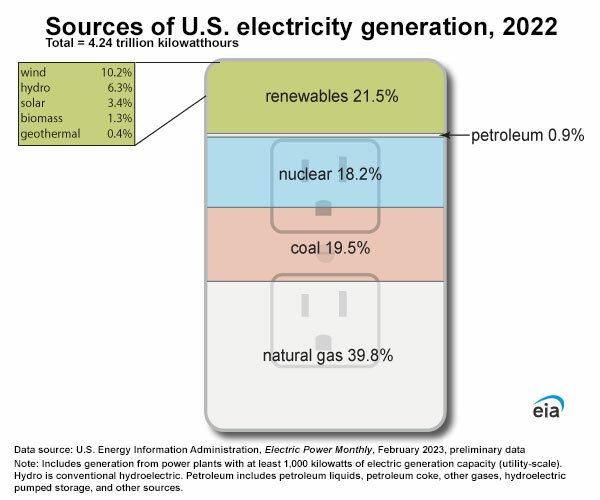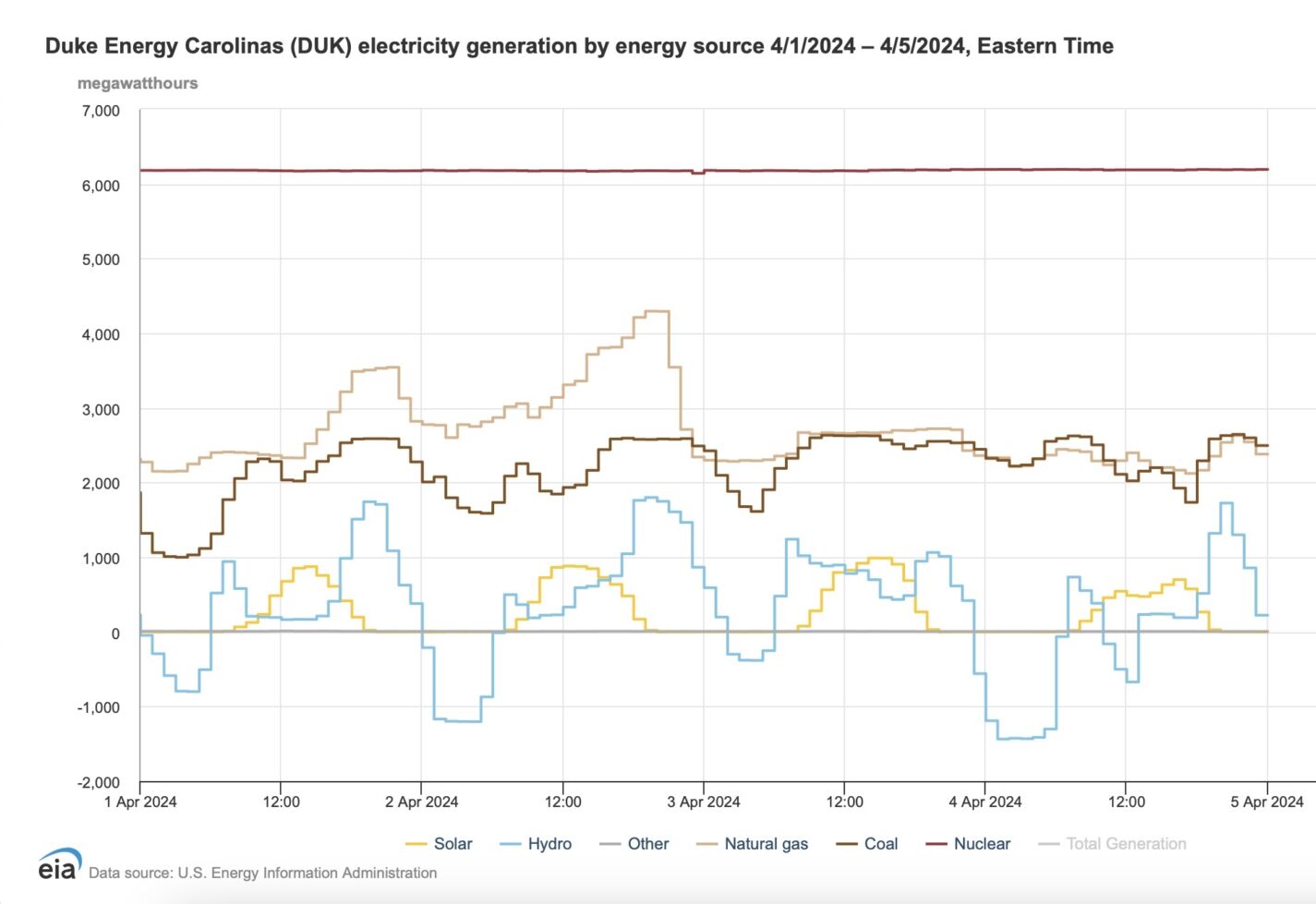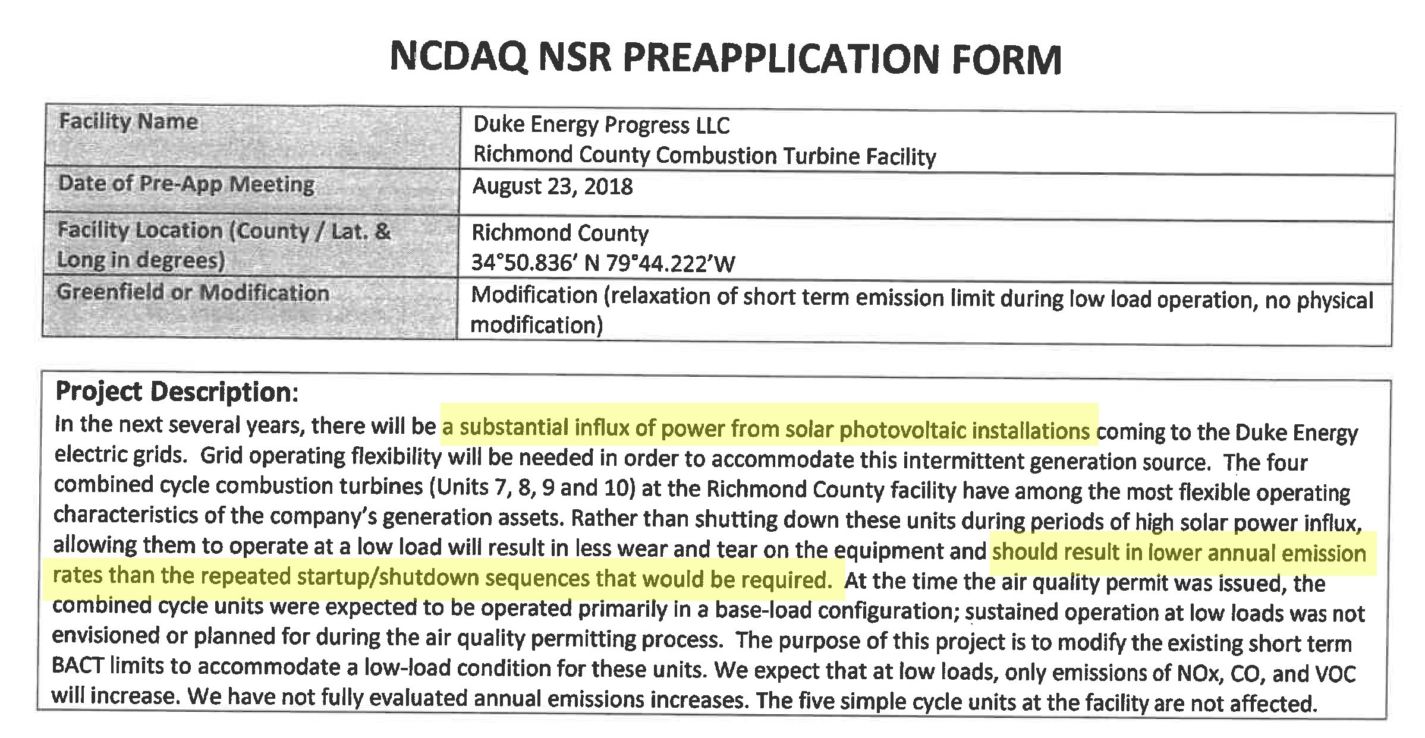The total eclipse on Monday, April 8, is expected to create the loss of up to 40 gigawatt-hours (GWh) of electricity production from solar facilities in the country. A report on UtilityDive explored the ramifications of the one-hour event for power grids, as if it’s a mystery how we receive power when solar isn’t producing.
Solar produces very little power on U.S. grids — just 3.4 percent per the most recent numbers from the U.S. Electricity Information Administration (EIA):

The reason for the sudden dropoff in production will be because solar facilities cannot produce electricity without enough sunlight. Never mind that they cannot produce electricity for over half of a 24-hour day. Owing to the angle of the sun, solar facilities cannot begin producing till later in the morning, and they stop producing in the late afternoon/early evening (depending on the time of year). Rainy or overcast conditions during the day also negatively impact solar production.
Nevertheless, to buy into UtilityDive’s concern about this unusual event, how are grid operators going to handle it? Quotes betray little concern, of course, despite the sensationalism:
- “We anticipate gas being the most likely solution, as the eclipse is very predictable, and every grid has the gas infrastructure to meet this demand event”
- “[W]e’re going to be fine”
- “[T]hey can navigate the event with no impact to reliability”
- “PJM is preparing to dispatch generation as needed to respond to solar power losses, including reserve and regulation resources as required”
- “We don’t expect any reliability-related issues”
Again, it’s not as if solar production doesn’t drop down to zero every evening and stay there till later the next morning. Here’s what Duke Energy Carolinas’ hourly electricity production has looked over the past few days, according to the EIA’s Hourly Electric Grid Monitor. You can see solar’s little yellow camel’s humps of production during the daytime hours with the most sunlight. At the top of the graph you can also see baseload, zero-emissions nuclear’s steady production all hours of the day, and you’ll notice dispatchable natural gas and coal’s adjustments according to demand.

What They Mean by Natural Gas as the “Most Likely Solution”
The importance of natural gas as a backup generation source is often overlooked by solar advocates who focus on the “no fuel costs” aspect of solar power. Yes, “nature provides the sun for free,” but only when nature provides the sun. When nature doesn’t, and the power company is expecting electricity generation, then something else has to provide it — and this backup source is often natural gas.
It’s why any responsible accounting for the cost of adding new solar to the grid must include the cost of its backup generation.
Unfortunately, a natural gas–fired power plant used for backup generation is more expensive than one used for normal generation. Being made to ramp up and down in response to solar’s whims is an inefficient use of the plant, for the same reason that a car gets more gasoline mileage in highway driving than in city driving featuring lots of stops and starts.
A request from Duke Energy to the N.C. Division of Air Quality showed there is also a greater environmental cost for this inefficient use of backup generation: greater emissions than they would have during normal use — greater emissions than “if no solar electricity were used and natural gas were used instead.”

The importance of natural gas as the bridge fuel to zero-emissions nuclear is not to be overlooked. As the John Locke Foundation’s Center for Food, Power, and Life (CFPL) demonstrated to the North Carolina Utilities Commission, the responsible, least-cost path to a “carbon-neutral” electricity grid needs dispatchable natural gas to power the transition between coal to nuclear.


